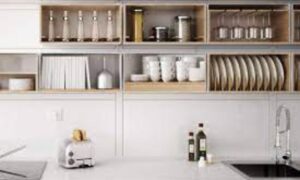“The Art of Keeping Your Medicine Cabinet Tidy and Organized.” A well-organized medicine cabinet is not just a matter of aesthetics; it plays a crucial role in ensuring easy access to medications and promoting a safe living environment.
In this article, we’ll share practical tips to help you declutter, categorize, and maintain your medicine cabinet efficiently. From properly disposing of expired medications to arranging items by frequency of use, we’ve got you covered.
Let’s dive in and learn how to transform your medicine cabinet into a functional and tidy space that enhances your overall wellness.
medicine cabinet organizer ideas
Keeping your medicine cabinet tidy and organized is essential for easy access to medications and a safer home environment. Here are some tips to help you maintain a well-organized medicine cabinet:
Clear out expired medications:
Regularly check the expiration dates of all medications in your cabinet. Dispose of any expired or unused medications properly, following local guidelines for medication disposal.
Group similar items together:
Categorize medications and healthcare products into groups, such as pain relievers, first aid supplies, vitamins, etc. This makes it easier to locate items when you need them.
Use storage containers:
Consider using small baskets, bins, or clear plastic containers to keep items separated and contained within the cabinet. Label these containers for easy identification.
Arrange by frequency of use:
Place the medications you use most often at eye level or within easy reach. Less frequently used items can be stored on higher or lower shelves.
Secure potentially dangerous items:
If you have children or pets at home, keep medications that could be harmful if ingested out of their reach. Consider using childproof locks on the medicine cabinet.
Keep it dry and cool:
Avoid storing medications in a humid or hot environment, like a bathroom. Instead, find a cool, dry place to ensure the effectiveness and longevity of the medications.
Use a magnetic strip or hooks:
Install a magnetic strip on the inside of the cabinet door to hold small metal items like tweezers or nail clippers. You can also use adhesive hooks to hang items like scissors or small bags.
Regularly review and update:
Periodically review the contents of your medicine cabinet and update it as needed. Add new medications, replace items that have been used up, and remove items that are no longer needed.
Include basic first aid supplies:
In addition to medications, keep some basic first aid supplies in your medicine cabinet, such as bandages, adhesive tape, antiseptic wipes, and cotton balls.
Emergency contact information:
Tape a list of important emergency phone numbers, including poison control, to the inside of the medicine cabinet door for quick reference.
Store in original packaging:
Whenever possible, keep medications in their original packaging to retain important information like dosage instructions and expiration dates.
Consider a medication organizer:
If you have multiple medications to manage, you might use a pill organizer with compartments for each day of the week or time of day to help you keep track of dosages.
Regularly clean the cabinet:
Wipe down the shelves and containers regularly to keep your medicine cabinet clean and free from dust or spills.
The Bottom Line
By decluttering, categorizing, and regularly reviewing its contents, you’ve created a safe and accessible space for your medications and healthcare essentials. Remember to check expiration dates and dispose of any unused medications responsibly.
A tidy medicine cabinet not only saves time when you need relief but also ensures the well-being of your entire household. With your newly acquired knowledge, you can confidently maintain an organized medicine cabinet and enjoy the peace of mind that comes with a well-prepared home. Stay healthy and happy!

